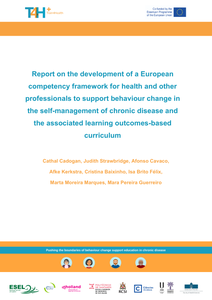Providing high-quality feedback is essential for improving preservice teacher performance. Rather than post-lesson feedback, immediate performance feedback while teaching is considered effective. This article reports on developing and piloting a standardised tool for synchronous feedback. Eight teacher educators from a Dutch higher education institution were trained to use the tool (based on accepted models of teacher roles, observation criteria and feedback levels) with pre-recorded lessons. Interobserver reliability was good for teacher roles and sufficient for feedback levels. Positive evaluations of the tool and educators’ interest in its application, warrant further research into scalability and effectiveness of synchronous feedback delivery.
DOCUMENT

This study investigated to what degree lesson-to-lesson variability in teachers' goal clarification and process feedback explains variability in secondary students’ motivational correlates. Students (N=570, 24 classes) completed questionnaires at six occasions. Multilevel regression analyses showed that relations between perceived process feedback and experienced need satisfaction (i.e., competence, autonomy and relatedness) were conditional on perceived goal clarification. No such interaction effects between process feedback and goal clarification were found for need frustration (i.e., experiencing failure, feeling pushed to achieve goals, feeling rejected). In general, when students perceived more process feedback or goal clarification, students experienced more competence, autonomy and relatedness satisfaction. Yet, when perceiving very high levels of process feedback, additional benefits of goal clarification were no longer present (and vice versa). In lessons in which students perceived goals to be less clear, they experienced more need frustration. No associations were found between process feedback and need frustration.
DOCUMENT

Chronic diseases represent a significant burden for the society and health systems; addressing this burden is a key goal of the European Union policy. Health and other professionals are expected to deliver behaviour change support to persons with chronic disease. A skill gap in behaviour change support has been identified, and there is room for improvement. Train4Health is a strategic partnership involving seven European Institutions in five countries, which seeks to improve behaviour change support competencies for the self-management of chronic disease. The project envisages a continuum in behaviour change support education, in which an interprofessional competency framework, relevant for those currently practising, guides the development of a learning outcomes-based curriculum and an educational package for future professionals (today’s undergraduate students).
DOCUMENT

Many citizens experience ambivalence – having simultaneously positive and negative evaluations – about changing their behaviour towards a more environmentally friendly lifestyle. Based on 36 studies, this study identifies and synthesises the current evidence on how ambivalence impacts environmental behaviours. In most studies, ambivalence is shown to be directly and negatively associated with environmental behaviours, i.e., higher levels of ambivalence are linked to lower levels of environmentally friendly and unfriendly behaviours. This applies to both types of ambivalence: objective (OA) and subjective (SA). Mediator analyses show, in line with the theory, that SA, not OA, drives behavioural change. In addition, results indicate that ambivalence moderates the relationship between independent–dependent variables mainly negatively, for example, by weakening attitude–behaviour relationships. This review shows the potential of ambivalence to facilitate behaviour change: SA about environmentally friendly behaviour can hinder, whereas SA about environmentally unfriendly behaviour can motivate, behaviour change. In addition, this review highlights some significant knowledge gaps in this body of research. A lack of validated standardised measurements of ambivalence makes it challenging to compare studies and reach conclusions about underlying theoretical constructs. Methods, research designs, and theoretical underpinnings need improvement to fully understand ambivalence and progress towards the transition of environmentally friendly behaviours.
MULTIFILE

In case of a major cyber incident, organizations usually rely on external providers of Cyber Incident Response (CIR) services. CIR consultants operate in a dynamic and constantly changing environment in which they must actively engage in information management and problem solving while adapting to complex circumstances. In this challenging environment CIR consultants need to make critical decisions about what to advise clients that are impacted by a major cyber incident. Despite its relevance, CIR decision making is an understudied topic. The objective of this preliminary investigation is therefore to understand what decision-making strategies experienced CIR consultants use during challenging incidents and to offer suggestions for training and decision-aiding. A general understanding of operational decision making under pressure, uncertainty, and high stakes was established by reviewing the body of knowledge known as Naturalistic Decision Making (NDM). The general conclusion of NDM research is that experts usually make adequate decisions based on (fast) recognition of the situation and applying the most obvious (default) response pattern that has worked in similar situations in the past. In exceptional situations, however, this way of recognition-primed decision-making results in suboptimal decisions as experts are likely to miss conflicting cues once the situation is quickly recognized under pressure. Understanding the default response pattern and the rare occasions in which this response pattern could be ineffective is therefore key for improving and aiding cyber incident response decision making. Therefore, we interviewed six experienced CIR consultants and used the critical decision method (CDM) to learn how they made decisions under challenging conditions. The main conclusion is that the default response pattern for CIR consultants during cyber breaches is to reduce uncertainty as much as possible by gathering and investigating data and thus delay decision making about eradication until the investigation is completed. According to the respondents, this strategy usually works well and provides the most assurance that the threat actor can be completely removed from the network. However, the majority of respondents could recall at least one case in which this strategy (in hindsight) resulted in unnecessary theft of data or damage. Interestingly, this finding is strikingly different from other operational decision-making domains such as the military, police and fire service in which there is a general tendency to act rapidly instead of searching for more information. The main advice is that training and decision aiding of (novice) cyber incident responders should be aimed at the following: (a) make cyber incident responders aware of how recognition-primed decision making works; (b) discuss the default response strategy that typically works well in several scenarios; (c) explain the exception and how the exception can be recognized; (d) provide alternative response strategies that work better in exceptional situations.
DOCUMENT

Specific approaches are needed to reach and support people with a lower socioeconomic position (SEP) to achieve healthier eating behaviours. There is a growing body of evidence suggesting that digital health tools exhibit potential to address these needs because of its specific features that enable application of various behaviour change techniques (BCTs). The aim of this scoping review is to identify the BCTs that are used in diet-related digital interventions targeted at people with a low SEP, and which of these BCTs coincide with improved eating behaviour. The systematic search was performed in 3 databases, using terms related to e/m-health, diet quality and socioeconomic position. A total of 17 full text papers were included. The average number of BCTs per intervention was 6.9 (ranged 3–15). BCTs from the cluster ‘Goals and planning’ were applied most often (25x), followed by the clusters ‘Shaping knowledge’ (18x) and ‘Natural consequences’ (18x). Other frequently applied BCT clusters were ‘Feedback and monitoring’ (15x) and ‘Comparison of behaviour’ (13x). Whereas some BCTs were frequently applied, such as goal setting, others were rarely used, such as social support. Most studies (n = 13) observed a positive effect of the intervention on eating behaviour (e.g. having breakfast) in the low SEP group, but this was not clearly associated with the number or type of applied BCTs. In conclusion, more intervention studies focused on people with a low SEP are needed to draw firm conclusions as to which BCTs are effective in improving their diet quality. Also, further research should investigate combinations of BCTs, the intervention design and context, and the use of multicomponent approaches. We encourage intervention developers and researchers to describe interventions more thoroughly, following the systematics of a behaviour change taxonomy, and to select BCTs knowingly.
DOCUMENT

Communication plays an important role in manyprofessional contexts. This is especially truefor students in the field of social work. Theaim of this study was to develop formative,self-regulated multimedia self-assessment ofsocial-communicative competencies for socialwork students. First, a pilot study wasconducted to gain insight into the students'specific characteristics. This insight was usedto design guidelines for the development of theassessment instrument in order to tune these tothe students' perceptions, instructionalpreferences, and personalities and thusenhancing the students' enthusiasm to use theself-assessment instrument. This might increasethe chance for successful implementation ofthis new form of assessment. A first version of a multimedia test wasdeveloped. A quality expert meeting wasorganised to gain insight into expertjudgements on the quality of the test and toobtain indications for improvement of theassessment. A second version of the test wasconstructed and put on the Internet. Nearly 400students completed the assessment and expressedtheir opinions on this new way of communicationassessment. We found it was possible to testsocial-communicative competence by means ofmultimedia, with the help of digital video. Theuse of Internet makes assessments available atany time to fit curriculum needs and alsoresolves time and space constraints. Ourconclusion was that the multimedia test isreasonably valid. All students reported havingliked the multimedia assessment.
LINK
Background: Self-management interventions are considered effective in patients with chronic disease, but trials have shown inconsistent results, and it is unknown which patients benefit most. Adequate self-management requires behaviour change in both patients and health care providers. Therefore, the Activate intervention was developed with a focus on behaviour change in both patients and nurses. The intervention aims for change in a single self-management behaviour, namely physical activity, in primary care patients at risk for cardiovascular disease. The aim of this study is to evaluate the effectiveness of the Activate intervention. Methods/design: A two-arm cluster randomised controlled trial will be conducted to compare the Activate intervention with care as usual at 31 general practices in the Netherlands. Approximately 279 patients at risk for cardiovascular disease will participate. The Activate intervention is developed using the Behaviour Change Wheel and consists of 4 nurse-led consultations in a 3-month period, integrating 17 behaviour change techniques. The Behaviour Change Wheel was also applied to analyse what behaviour change is needed in nurses to deliver the intervention adequately. This resulted in 1-day training and coaching sessions (including 21 behaviour change techniques). The primary outcome is physical activity, measured as the number of minutes of moderate to vigorous physical activity using an accelerometer. Potential effect modifiers are age, body mass index, level of education, social support, depression, patient-provider relationship and baseline number of minutes of physical activity. Data will be collected at baseline and at 3 months and 6 months of follow-up. A process evaluation will be conducted to evaluate the training of nurses, treatment fidelity, and to identify barriers to and facilitators of implementation as well as to assess participants’ satisfaction. Discussion: To increase physical activity in patients and to support nurses in delivering the intervention, behaviour change techniques are applied to change behaviours of the patients and nurses. Evaluation of the effectiveness of the intervention, exploration of which patients benefit most, and evaluation of our theory-based training for primary care nurses will enhance understanding of what works and for whom, which is essential for further implementation of self-management in clinical practice.
DOCUMENT

This year, OPTIMAX was warmly welcomed by University College Dublin. For the sixth time students and teachers from Europe, South Africa, South America and Canada have come together enthusiastically to do research in the Radiography domain. As in previous years, there were several research groups consisting of PhD-, MSc- and BSc students and tutors from the OPTIMAX partner Universities or on invitation by partner Universities. OPTIMAX 2018 was partly funded by the partner Universities and partly by the participants.
DOCUMENT

The central aim of this thesis was to increase understanding of designing vocational learning environments at the school–work boundary. Four studies were conducted, focusing on learning environment designs at the school–work boundary and on design considerations of the actors involved in their construction, both from the world of school and the world of work.
DOCUMENT
